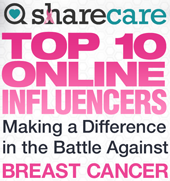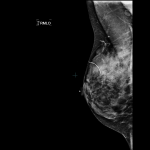Government Mammography Task Force Vs. You
Top 9 Reasons Why the Government Panel Recommendations on Mammography are Bad for Your Health
If the 2009 USPSTF (U.S. Preventive Services Task Force) recommendations are followed, as many as 30% of breast cancer deaths will be in women who could have been saved. The USPSTF knew this when they issued their report.
1. The Task Force’s own data shows that the most lives are saved by starting mammography screening at age 40, but they chose to ignore that data. They made a value judgment as to how much a woman’s life is worth. The science clearly shows that starting annual screening at age 40 saves more lives, and the Task Force does not dispute that fact.
2. The panel was charged with the task of finding a way to cut healthcare costs, NOT with saving the most lives. You are a statistic in this form of public health decision-making, not a person. The Task Force is asking young, productive women to “take one for the team.”
3. There was not a single expert in breast cancer on the panel. Experts’ input was not even sought out.
4. The suggestion that screening between 40 and 50 should be reserved for women at high risk is absurd. Perhaps the Task Force is not aware that the vast majority of women diagnosed with breast cancer each year (75-90%!) are NOT at high risk.
5. The Task Force was more concerned with women’s supposed “anxiety” over possibly being called back for additional pictures or having a benign needle biopsy than with death by breast cancer. Yet the supposed “harms of screening” pale in comparison to the harms of not being screened.
6. The harms to an individual woman and her family as well as the harm to society, by losing women in their 40’s, important years when many women have children who need them and they are often working productively in our economy to support their families, are completely overlooked by the Task Force. This is a HUGE COST. If you know of a family where the mother has died young, you know what suffering this brings.
7. The only value of mammography, according to the Task Force, is avoiding death from breast cancer. They completely ignore the value of finding a cancer early enough so that a woman can have a better cosmetic outcome after her surgery, and she might be able to avoid having chemotherapy, resulting in much less suffering. An early cancer is also treated much less expensively than a late stage cancer, yet this was also ignored by the panel.
8. The Task Force argues that there are some cancers that will not become life-threatening, and thus finding them and treating them is worthless. But WE DON’T KNOW at this point which cancers will progress and which won’t – we’d just be guessing, and gambling with women’s lives. Until science can reliably tell us this crucial information, I’d rather err on the side of “over-treatment” than take the big risk of “under-treating.”
9. Recommending against women being taught to do self-examinations, and recommending that a woman’s doctor not perform annual breast examination on her, is completely irresponsible and ludicrous. Would the Task Force prefer that a breast cancer be discovered when the tumor has broken through the skin and is fungating and ulcerating from the breast? Here’s what that looks like on a breast MRI. This is a 79-year-old woman who never had a mammogram, and who ignored large lumps in her breasts for several years. She didn’t go to the doctor until the cancer in the right breast started to break through the skin, and the smell was unavoidable:
DON’T TAKE ONE FOR THE TEAM! Breast cancer is the number one cause of death for women age 35-50. Don’t let a government panel determine your fate.
Remember:
- Annual mammograms starting at age 40.
- Physical breast exam performed by your doctor every year
- Monthly breast self-examination Don’t Be Shy – Know Your Breasts!
- Find out your breast density, and have an additional test (ultrasound or MRI) each year if you are dense What Breast Density Means to You.
- Know if you are at high risk for developing breast cancer in your lifetime How Do I Know If I’m High Risk?
References:
1. Kopans DB. The 2009 U.S. Preventive Services Task Force Guidelines Ignore Important Scientific Evidence and Should be Revised or Withdrawn. Radiology 2010;256:15-20.
2. Hendrick RE, Helvie MA. United States Preventive Services Task Force Screening Mammography Recommendations: Science Ignored. AJR Am J Roentgenol. 2011
Feb;196(2):W112-6.










